Tallapoosa County, Alabama Land For Sale (59 results)
Want to post your listings on AcreValue? View Listing Plans
AcreValue offers multiple types of land for sale in Tallapoosa County, so if you’re looking for a new ranch, farm, recreational property, hunting ground, developmental property, or land investment you’ve come to the right place. Regardless of what your needs or objectives are for your land, we have a large inventory of available parcels that are updated regularly. Therefore, it’s very likely that we have the perfect parcel that meets all the search criteria & specifications that you’ve been searching for. Additionally, because our land for sale listings are always being updated due to the frequency of land being sold or new land listings being put on the market, make sure that you are checking back with AcreValue regularly for updates. When you find the perfect land parcel and you are ready to take the next steps you can easily connect directly with the listing agent to help you facilitate your land purchase. Browse AcreValue's Alabama land for sale page to find more potential opportunities in Alabama that fit your needs. We wish you the best of luck in finding your next ranch, farm, recreational property, hunting ground, developmental property, or land investment.


04/02/2025
$669,000
205 ac.
ACTIVE
Tallapoosa County - Bluff Springs Road, Goldville, AL
+/-205 acres of timberland in Tallapoosa County, AL. 15-20 minute drive from Ashland and Alexander City. 1/4 mile of frontage on Bluff Springs Road. Osborn Creek is a beautiful creek that flows year round through the property along with several smaller tributaries This tract is very diverse with recently thinned pines, hardwood bottoms and three year old planted loblolly.
The timber consists of:
-53 acres of 14 year old loblolly pine
-31 acres of 16 year old loblolly pine
-83 acres of 3 year old loblolly pine
-32 acres of hardwood bottomland (SMZ)
-6 acres of non-forest
The three year loblolly pines are MCP loblolly from Arborgen nursery.
The 14 and 16 year old pine stands have been thinned and will provide excellent wildlife habitat after a prescribed burn.
There is a good system of internal roads and trails to get around the property.
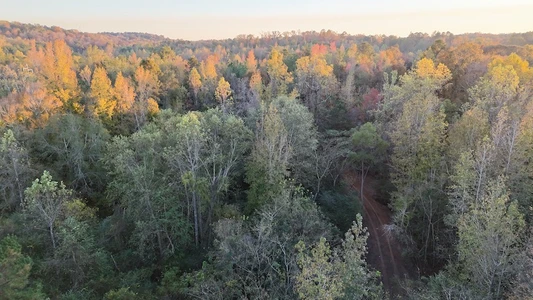

11/19/2025
$312,000
78 ac.
ACTIVE
Tallapoosa County - 0 Cedar Lane, Alexander City, AL
This 78-acre property in Tallapoosa County, Alabama, offers a peaceful setting for your future homesite. Whether youre dreaming of building a Barndominium or want land for recreation like hunting or riding side-by-sides, this spot has you covered. Located just off of Cedar Lane within the Alexander City limits, it combines the convenience of city living with the beauty of nature, giving this property the perfect feel of seclusion. Highlights include a 1.5-acre duck pond connected to Tommy Saw Creek along the eastern boundary and gently rolling hills with mature hardwoods and pines. This is ideal for those seeking long-term investments with the potential for future timber harvests. A newly built road system runs from Cedar Lane to the gas line on the western edge, making it easy to explore the entire property. With abundant wildlife, excellent hunting, and stunning sunsets from the ridge, its the perfect blend of adventure and relaxation. Contact Agent Brian Spivey or Jeremy Morris to schedule your private tour of this great property.
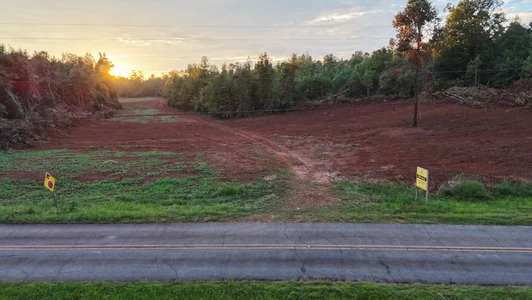

07/15/2024
$659,000
104 ac.
ACTIVE
Tallapoosa County - Barrons Bridge Road, Lot#WP001, Dadeville, AL
Searching for the perfect hunting or recreational escape, this property has endless possibilities. Conveniently located off of Highway 50 near beautiful Lake Martin. The property is trail-ready for ATV rides and gives proper access to beautiful hunting sites. Features include pines, hardwoods, green fields, food plots to assist in hunting whitetail deer or turkey, and a small stream that provides a water source for wild game. The size of this property would allow you to build your barndominium, pole barns, or workshop and still have room to enjoy the property for recreational use. In addition, the timber was last harvested in 2009, allowing growth and regeneration for a possible future investment. Call now to schedule a visit to this beautiful property that will leave you wanting to make it your own!
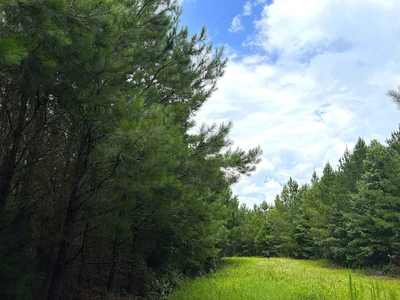

07/12/2025
$360,000
80 ac.
ACTIVE
Tallapoosa County - 0 Denver Road, Dadeville, AL
DENVER ROAD 80
80 Acres of Privacy and Potential Minutes from the Tallapoosa
River and Lake Martin
If you've been looking for the perfect blend of convenience and seclusion, this 80-acre property checks all the boxes. Located just minutes
from the Tallapoosa River and a short 1520 minute drive from Lake
Martinone of the most popular recreational lakes in the country
this land offers the best of both worlds.
Despite being close to grocery stores, restaurants, and even Auburn,
once you're on the property, you feel like you're a million miles away.
It's peaceful, private, and full of natural beauty.
The land features a healthy pine plantation that will be ready for thinning in the next couple of years, creating immediate and long-term value. A couple of food plots are already in place, and the hunting for deer
and turkey here is excellent. Whether you're looking for a recreational
retreat, hunting tract, or a homesite in a prime location, this property
deserves a look.
Please call me, Eric Leisy, to schedule a tour today. 334-657-6707 .
WHY BUY LAND?
In light of what is going on in the world today there has never been a
better time to buy land. Attributes of land include: 1) Land can be a
great hedge against inflation, 2) Land does not fluctuate erratically like
the stock market, 3) Land will ALWAYS be there for tomorrow. 4)
Land provides a healthy environment away from the masses and can
even provide food for your family.


02/03/2025
$79,000
12.5 ac.
ACTIVE
Tallapoosa County - Dadeville, AL
12.5 +/- acres located near the Dadeville community in central Alabama! The property is covered mostly in young timber. Has paved road frontage. Would be great for residential use and is located approximately 30 minutes northeast of Auburn, AL. Property is mostly level with a slight slope on the back of the property. Call today for more information and to schedule a showing!


06/30/2025
$1,400,000
58 ac.
ACTIVE
Tallapoosa County - Cross Creek Road, Alexander City, AL
This is a rare opportunity to own 58 pristine acres in the highly sought-after Cross Creek neighborhood, located just over two miles from downtown Alexander City, AL. This versatile property offers the perfect blend of natural beauty, privacy, and modern infrastructure; ideal for a private estate, family compound, or future subdivision development.
At the heart of the property lies a scenic 5-acre, stocked bass lake, perfect for fishing, kayaking, or simply enjoying peaceful waterfront views. Multiple green fields, miles of well-maintained trails, and a healthy population of deer and other wildlife make this a true outdoor paradise.
The gently rolling topography and mature hardwoods create numerous ideal homesites, each offering privacy, natural beauty, and excellent views; making it easy to envision your dream home or multiple build sites.
Access is seamless with very well-maintained internal roads, a lighted main entrance road, and two automatic gated entry points. A newly constructed pole barn provides ample space for equipment storage, farm activities, or future expansion.
Despite its private and secluded feel, the property is fully serviced with city water, power, and gas, and sits within the Alexander City limits, offering the benefits of municipal services while feeling far removed from town. The power is ran underground, one box being on the west side of the lake and the other being on the east side.
Whether you're looking to build your dream home, develop a multi-home subdivision, or invest in one of the areas most scenic tracts of land. This is an exceptional opportunity that combines location, infrastructure, and natural beauty.

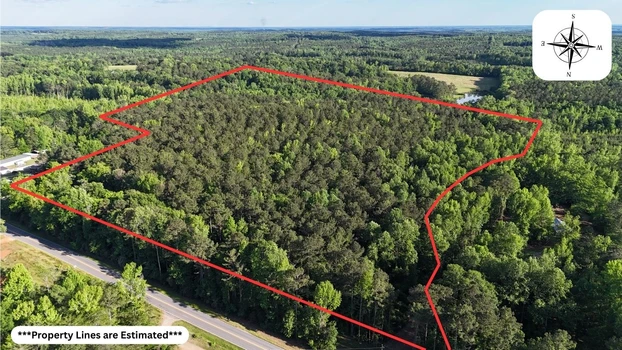
09/22/2025
$265,000
38 ac.
ACTIVE
Tallapoosa County - 5171 Alabama 50, Dadeville, AL
38± Acres – Creekfront Retreat Between Auburn & Lake Martin
This 38± acre property in Tallapoosa County offers the perfect mix of privacy, natural beauty, and convenience. Ideally situated between Auburn and Lake Martin, it’s just 30 minutes from Auburn and only 15 minutes from a Lake Martin boat ramp. With two points of public road access and approximately 850 feet of frontage along State Route 50, the property is easy to reach while still offering a quiet, private setting.
A pretty creek winds through the property, surrounded by mature hardwood timber that creates a picturesque backdrop and excellent wildlife habitat. The balance of the land is in well-established, planted loblolly pine, now about 25 years old, giving the tract a classic woodland setting that feels both scenic and secluded.
Power and water are available at the road, making it a great candidate for building a private getaway, family retreat, or permanent residence. Whether you’re looking for a place to enjoy the outdoors, a weekend camp close to Lake Martin, or a homesite with room to roam, this property is a rare find in a prime location.
Highlights:
38± acres in Tallapoosa County, AL
Roughly 850 ft. of frontage on State Route 50
Two points of public road access
Beautiful creek with mature hardwood timber
25-year-old planted loblolly pines
30 minutes to Auburn, 15 minutes to a Lake Martin boat ramp
Power and water available at the road
Great potential for a private homesite, weekend retreat, or recreational use
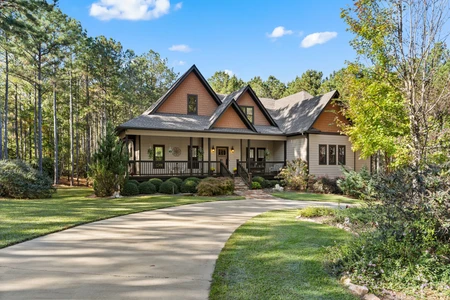

11/09/2025
$1,599,000
74 ac.
ACTIVE
Tallapoosa County - 10245 Highway 50, Dadeville, AL
Welcome to 10245 Highway 50, a beautiful estate that spans 74 acres of timeless beauty and offers approximately 5,100 square feet of thoughtfully designed living space. Conveniently located in the Dadeville area of Tallapoosa County, this estate is minutes to the shores of Lake Martin and less than 30 minutes to Downtown Auburn.
From the moment you step through the front door, you're greeted by the warmth of a floor to ceiling stone fireplace, handcrafted mantle, and vaulted wood ceilings. The kitchen offers generous granite counterspace, abundant cabinetry, and an effortless flow. At its center, a custom cedar island, crafted from trees harvested right here on the property. The kitchen and breakfast area open seamlessly to the dining room wrapped in rich wood tones.
The primary suite features a beautiful tray ceiling, a spacious bath, and private access to a peaceful screened porch.
Rounding out the main level, you'll also find two additional bedrooms, one and a half bathrooms, a small office, laundry room, ample storage, and a two-car garage.
Downstairs, a large guest suite offers comfort and privacy with its own full bath, sitting area, and access to a lower-level porch. Additional office area and TV room make guests feel right at home, and a large storage room.
Spanning approximately 74 acres, the property consists mostly of mature, pine plantation that is ready to be thinned for an immediate return on investment. Among the towering pines and hardwoods include several, well maintained trails that weave through the property. Down one of the trails, you are greeted by a beautiful catfish pond with a rustic log cabin along its edge. Custom built by the owner, the logs that were used in the cabin came directly from the site where the pond is located.
The 40x30 workshop is complete with power and water, perfect for your tractor, UTVs, gardening equipment, and so much more. Inside, it also contains a 15x12 climate-controlled room for additional storage or to be converted into an additional bedroom or entertainment room.
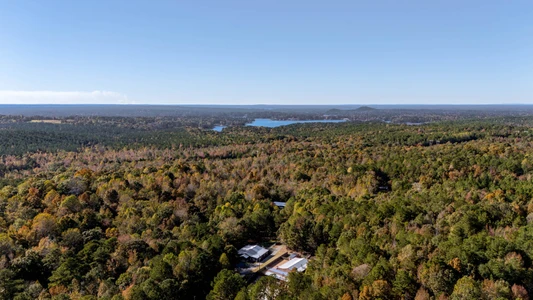

11/08/2025
$1,590,000
67 ac.
ACTIVE
Tallapoosa County - 4240 Highway 49 South, Dadeville, AL
If you are looking for a property, located in one of the fastest growing regions, in the state of Alabama, that is already generating a steady cash flow, with even more opportunity to grow your return on investment, you will want to see this tremendous opportunity in Tallapoosa County, Alabama!
Located in close proximity to the shores of beautiful Lake Martin, near the Blue Creek and Stillwaters communities of Dadeville , Alabama, and 30 minutes to the Auburn/Opelika area, this property consists of approximately 67 acres of land with multiple, metal building structures.
The land features consist of a mixture of hardwood and pine trees of various age classes, with streams, a powerline easement-that offers great diversification for wildlife, and a diverse topography.
One of the buildings is currently being used as a lucrative, dog boarding facility, with plenty of infrastructure and kennel space to expand and meet the community needs of dog care in this thriving area, of Lake Martin and east Tallapoosa County. This could provide a new owner with an immediate return on investment, with a robust clientele and book of business already in place. The property sets up very well to expand this business that is already in place or utilize the space for a new venture.
The main building, would make a great gathering space for entertaining guests and family and friends. It features a large open concept with high ceiling, wooden interior wall accents, a kitchenette, plenty of storage space in the form of closets, additional rooms, and a bathroom. It features a commercial size bar, complete with covered outdoor sitting space to entertain many guests.
Other possible cash flow business opportunities here could be; an event center that could host weddings, receptions, corporate events and retreats. With the convenience to Lake Martin and the topography and layout of the acreage, it could set up well for RV, Camper, and Cabin sites or boat storage space. It would also make a great location to have a thriving skeet shooting or sporting clays course.


09/20/2024
$799,000
311 ac.
ACTIVE
Tallapoosa County - Alabama 22, New Site, AL
*Price Reduced* 9-5-25
+/-311 acres of timberland in Tallapoosa County, AL. Less than 7 miles to downtown Alexander City and the nearest boat ramp on Lake Martin. 1 mile of frontage along Josie Leg Creek, a beautiful creek that flows year round. The topography is rolling hills which allows some beautiful views of the surrounding area.
The timber consists of:
-71.4 acres of two year old loblolly pine
-110.6 acres of seven year old loblolly pine
-6.8 acres of natural pine
-60.8 acres of recent clear cut
-62 acres of bottomland hardwood (SMZ)
Both stands of loblolly pine were planted with OP-Elite seedlings from Arborgen nursery. The two year old pines are already averaging 4 feet tall in their second growing season.
The two year old pine stand is also full of ragweed and native grasses. I saw a covey of wild quail on my recent inspection of the property.
There is a good system of internal roads to get around the property and two concrete bridges allow truck access across Josie Leg Creek to the north side of the property.
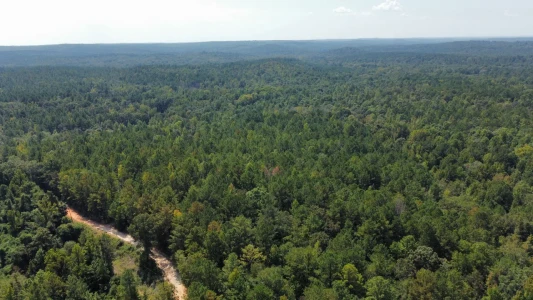

11/01/2025
$149,900
23 ac.
ACTIVE
Tallapoosa County - 26, Camp Hill, AL
23 Acres Tallapoosa County, AL | Churchill Road
Churchill Road, Tallapoosa County, Alabama
Discover 23 beautiful acres in Tallapoosa County, offering the perfect mix of privacy, recreation, and convenience. This property features a picturesque creek running through it, mature hardwood and pine timber, and a well-maintained trail system that makes accessing every part of the land easy whether for hunting, hiking, or exploring.
Power is available at the road, giving you the flexibility to build your dream home, weekend cabin, or hunting retreatin a quiet, secluded setting.
Outdoor enthusiasts will love the excellent deer and turkey hunting opportunities. A shooting house overlooking a white oak bottom is already in place, making this tract turnkey for the upcoming season.
Located just 2530 minutes from Auburn and only a short drive from Lake Martin, you'll enjoy the peacefulness of the country while staying close to town and recreation.
Property Highlights:
23 Acres of mixed mature hardwood & pine
Year-round creek running through the property
Power available at the road
Established trail system for easy access
Excellent deer & turkey hunting
Shooting house overlooking white oak bottom
Private & remote setting, perfect for a home or cabin
Convenient to Auburn (2530 mins) and Lake Martin
This property offers the best of Alabama's outdoors a perfect blend of convenience, beauty, and opportunity.
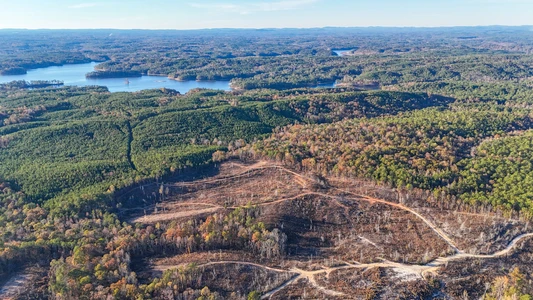

11/27/2025
$265,000
55 ac.
ACTIVE
Tallapoosa County - Big Rock Rd, Jacksons Gap, AL
This beautiful hunting tract is fully set up and ready to enjoy this season! It is located in Jacksons Gap, just minutes from Lake Martin. With a strong deer and turkey population, established food plots, and excellent access throughout, this property offers a great recreational opportunity from day one.
The land features rolling topography with nearly 120 feet of elevation change, creating outstanding vantage points for deer hunting, listening for spring gobblers, or enjoying sunsets overlooking the surrounding countryside toward the lake. A beautiful, rocky, spring-fed creek flows across the property and is surrounded by large hardwood timber, creating bottomland areas that are ideal for hunting.
This area features a mid- to late-January rut, providing excellent late-season hunting. The property is surrounded by large tracts of timberland and is very private. Additional acreage is available for purchase if a larger tract is desired.
Key Features:- Excellent system of interior roads
- Beautiful flowing creek
- Large, mature hardwoods
- Newly established pine plantation
- Three established food plots, planted and ready to hunt
- Hunting stands already in place
- Strong deer and turkey population
- Rolling terrain featuring ideal vantage points for hunting and scenic views
For more information or to schedule a private showing, contact Dent Stallworth today.
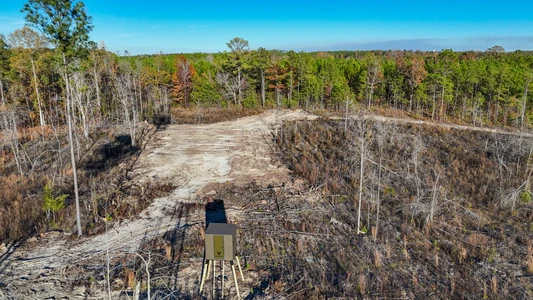

11/16/2025
$159,900
30 ac.
ACTIVE
Tallapoosa County - 0 Big Rock Rd, Jacksons Gap, AL
Secluded 30 Acres Turnkey Hunting & Recreation
Here's your opportunity to own a fantastic hunting property just a stone's throw away from beautiful Lake Martin! A very low-traffic county road off Camp ASCCA Drive leads you back to a property that offers the kind of privacy and quiet that's getting harder and harder to find. This tract has pretty much everything a hunter needsfrom mast-producing hardwoods, to a spring-fed creek, to recently planted pines that are currently providing great bedding habitat and browse and will continue to do so for many years. The property also features two food plots that are planted and ready to be hunted this season, as well as a brand-new shooting house and a couple of ladder stands. The rolling topography is ideal for deer and turkey hunters, providing great vantage points and productive bottoms for strategic hunting.
This property is surrounded by large timberland holdings and is currently not near any major development. Despite the seclusion, you're only minutes from Highway 280 and 1015 minutes from everyday essentials including restaurants, gas stations, grocery stores, and more. It is located less than 10 miles from Dadeville, approximately 15 miles from Alexander City, around 30 miles from Auburn and Opelika, and about an hour and a half from Birmingham.
Whether you're seeking a weekend hunting escape, a place to teach your kids about the outdoors, or a long-term land investment in a growing areathis 30-acre tract is one you'll want to see. Additional acreage is also available for purchase. Property is shown by appointment only, so please give Dent Stallworth a call to schedule an in-person visit.
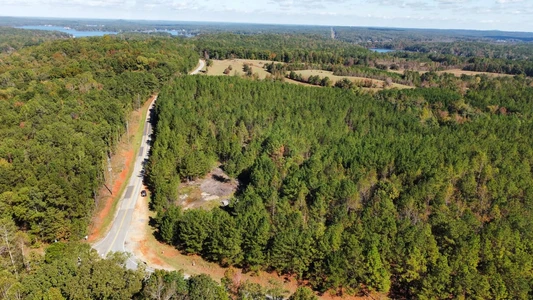

11/04/2025
$75,000
5 ac.
ACTIVE
Tallapoosa County - 5, Dadeville, AL
5 Acres Near Lake Martin Turner Road, Tallapoosa County, AL
Discover the perfect balance of privacy, convenience, and natural beauty with this 5-acre property located on Turner Road in scenic Tallapoosa County, Alabamajust 35 minutes from Auburn and minutes from the shores of Lake Martin.
This property features a beautifully thinned pine stand that's been recently managed, offering both shade and open space. A nice cleared section is already in placeideal for building your dream home, cabin, or weekend retreat.
Utilities are ready to go!
Power, water, and high-speed internet are all available right at the road frontage.
The land's gentle terrain and well-maintained pines make it easy to develop or enjoy as-is. Whether you're looking to build, camp, or simply invest in land, this property checks all the boxes.
The wildlife population is thriving, providing excellent opportunities for Hunting right in your backyard.
Highlights: 5 acres beautiful, usable land Cleared homesite area Power, water & internet at the road Recently thinned pine stand 35 minutes to Auburn Near Lake Martin recreation, boating & fishing
Your slice of Alabama country living awaits on Turner Road!
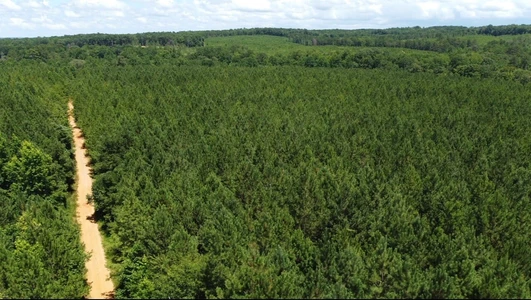

08/30/2025
$201,515
58 ac.
ACTIVE
Tallapoosa County - 1 Dipping Vat Road, Daviston, AL
58+/- Acres of Prime Land COOSA County, AL Convenient to Daviston
Location: COOSA County, AlabamaAcreage: 58 +/- AcresLand Type: Pine & Hardwood Timber MixWildlife & Hunting Potential: ExcellentAccess: Great internal road systemFood Plot: Established and ready to attract game
Discover THIS 58 +/- acre tract located in desirable COOSA COUNTY, just minutes from Daviston. Whether you're a hunter, nature enthusiast, or seeking a peaceful spot for a future getaway, this property has everything you need.
Featuring a well-maintained internal road system, the land is easy to navigate and ideal for ATV rides, hunting access, or future development. The established food plot draws abundant wildlife, making this a prime spot for deer and turkey hunting.
The property boasts a diverse mix of mature pine and hardwood timber, offering both natural beauty and potential timber value.
Highlights:
Great location, convenient to Daviston
58+/- acres of mixed timber
Excellent hunting and wildlife habitat
Established food plot
Good road system throughout property
Don't miss this opportunity to own a recreational or investment property in a sought-after area of East Alabama!

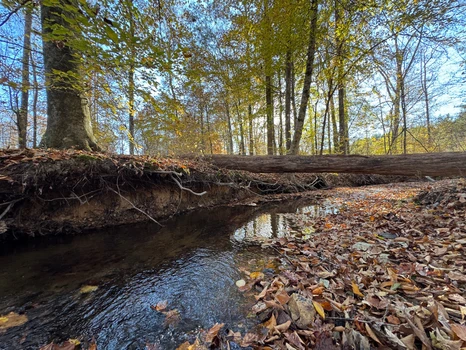
11/25/2025
$139,000
20.92 ac.
ACTIVE
Tallapoosa County - Germanys Ferry Road, Daviston, AL
Horseshoe Bend Schools!! Welcome to Germany's Ferry Farms! Located in the Daviston community of Tallapoosa County, Alabama, this great property would make a great recreational get a way property or provide the perfect backdrop to build your custom dream home on. The property consists of a large flowing creek, buffered by towering hardwoods trees, consisting of red oaks, white oaks (which deer love), yellow tulip poplars, and so much more! It also has a young pine plantation and wildlife openings . This tract is conveniently located, as it is just east of the New Site community and about 20 minutes north of Dadeville and Highway 280. It is about 25 minutes to Lake Martin and about 35-40 minutes to Auburn. The topography provides great views of the hardwood and creek area, with nice homesite locations. Utilities are close by. Give Ken or Brian a call for more information. Sellers are licensed real estate agents in the state of Alabama.
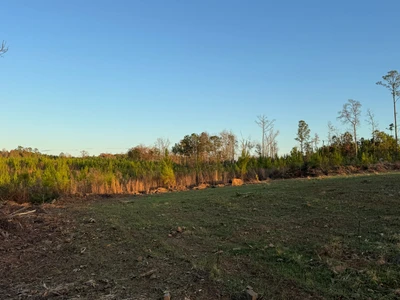

11/28/2025
$129,500
20.98 ac.
ACTIVE
Tallapoosa County - Germany's Ferry Road, Daviston, AL
Horseshoe Bend Schools!! Welcome to Germany's Ferry Farms! Located in the Daviston community of Tallapoosa County, Alabama, this great property would make a great recreational get a way property or provide the perfect backdrop to build your custom dream home on. The property consists of young pines with some hardwoods, great for wildlife. It features two openings great for food plots, homesite location, or a place to build a pole barn. It also has a hunting stand already on one of the food plots. . This tract is conveniently located, as it is just east of the New Site community and about 20 minutes north of Dadeville and Highway 280. It is about 25 minutes to Lake Martin and about 35-40 minutes to Auburn. The topography provides great views of the hardwood and creek area, with nice homesite locations. Utilities are close by. Give Ken or Brian a call for more information. Sellers are licensed real estate agents in the state of Alabama.
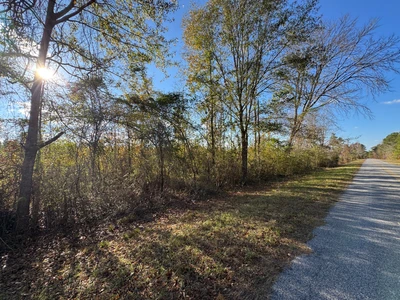

11/25/2025
$89,500
13.35 ac.
ACTIVE
Tallapoosa County - 5533 Germanys Ferry Road, Daviston, AL
Horseshoe Bend Schools!! Welcome to Germany's Ferry Farms! Located in the Daviston community of Tallapoosa County, Alabama, this great property would make a great recreational get a way property or provide the perfect backdrop to build your custom dream home on. It features young pines, paved road frontage, a cleared area already in place that would be a great homesite location or food plot. The pines are young enough for someone to easily convert to pastureland for cows and horses. This tract is conveniently located, as it is just east of the New Site community and about 20 minutes north of Dadeville and Highway 280. It is about 25 minutes to Lake Martin and about 35-40 minutes to Auburn. Utilities are close by. Give Ken or Brian a call for more information. Sellers are licensed real estate agents in the state of Alabama.
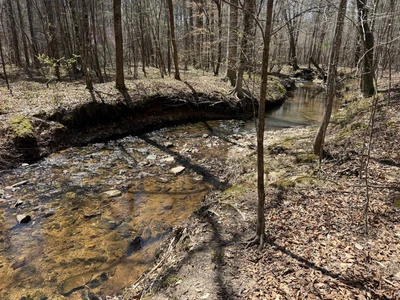

04/08/2025
$525,000
150 ac.
ACTIVE
Tallapoosa County - Sweetwater Rd, Daviston, AL
Located just off CR 79 on Sweetwater Rd, this expansive 150 +/- acre property offers a unique combination of natural beauty and investment potential. Situated between the charming towns of New Site and Daviston, this land boasts mature pine and hardwood timber, providing both aesthetic appeal and long-term timber investment opportunities.
The property features gently rolling topography across the majority of the land, offering a pleasant landscape that is both easy to navigate and full of potential for a variety of uses. Sweetwater Creek, a wide and picturesque waterway, runs through the center of the property, providing natural beauty and recreational opportunity's.
Outdoor activities could include Deer, Duck and Turkey hunting on this property.
If you're looking for a place to escape the city for the weekend and enjoy some country living you need to come visit this tract.
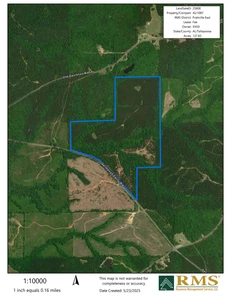

05/30/2025
$656,122
127.83 ac.
ACTIVE
Tallapoosa County - Daviston, AL
Excellent Hunting and recreational property.
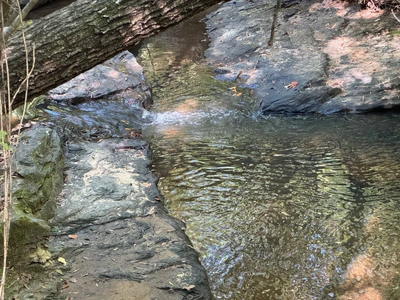

10/07/2024
$461,996
70 ac.
ACTIVE
Tallapoosa County - Pleasant Road, Camp Hill, AL
This great property consists of 70 +/- acres of professionally managed pine plantation timber that has been recently 1st thinned, making it a great recreational tract, with a timber investment upside. This is a desirable location for timber investment due to proximity to mill product locations and desirable from a recreation standpoint as it is between the Auburn/Opelika area and Lake Martin. A great feature on this property is all of the frontage on beautiful Mitchell Creek, that meanders through the property. The rock out croppings within the creek bed, create a myriad of ripples and tiny waterfall features throughout the creek. This would make a nice place to custom build a home or cabin. Give Brian or Candice a call for more information or to schedule a time for a showing.
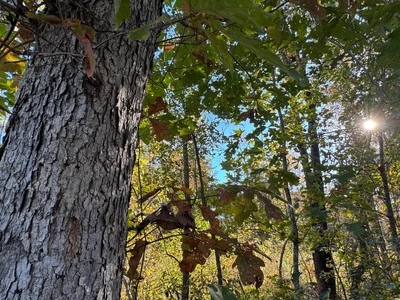

11/12/2025
$239,000
12.3 ac.
ACTIVE
Tallapoosa County - 5106 Jackson Road, Camp Hill, AL
Location, Location, Location! Located in one of the most desirable areas of Tallapoosa County, in Camp Hill, close to Waverly, this property sites up well to build your custom home and enjoy the land living lifestyle! Located at the corner of Jackson Road and Tallapoosa Farm Road, this property features beautiful hardwoods, flowing stream, and endless possibilities! Water and power are available at the road. This is property cannot be divided. Give Claire Hill or Brian Watts a call to take a look.
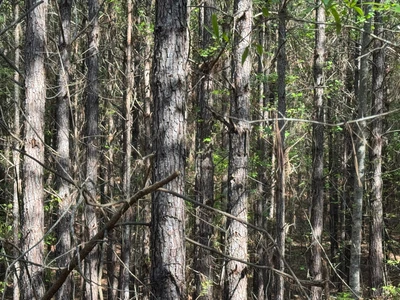

04/23/2025
$438,000
120 ac.
ACTIVE
Tallapoosa County - Abbott Road, Jacksons Gap, AL
Pine Plantation that is ready to be thinned! Located minutes from the shores of Lake Martin, this great property features a healthy pine plantation with hardwood smz areas , and a gentle rolling topography that would make this property a great hunting property, place to build your custom built home, with a timberland investment upside! Conveniently located in the Jacksons Gap community of Tallapoosa County, this property is in very close proximity to Lake Martin, minutes from Highway 280, and 30 minutes to Auburn University. The property consists of pine pulpwood, pine chip and saw, and some hardwood products, including white oaks. It is located within great proximity to several woods products mill locations. It also has power access at the road. Give Brian or Candice a call for more information.
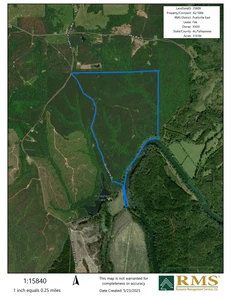

05/30/2025
$1,471,099
310.9 ac.
ACTIVE
Tallapoosa County - Daviston, AL
Excellent recreation property with frontage on the Tallapoosa River.
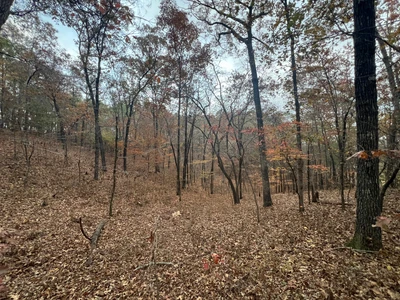

11/21/2025
$124,000
12.4 ac.
ACTIVE
Tallapoosa County - Depot Rd, Jacksons Gap, AL
Here's your opportunity to take hold of the newest 12+/- acre tract in Tallapoosa County. Located just off Highway 280 next to the pulp mill between Dadeville and Alexander City, this tract is covered in mature red oaks and beautiful elevation changes. Making it the perfect site for your next residential or possibly commercial endeavor. This property has approximately 780'+/- frontage on Depot Avenue and approximately 900'+/- fronts the railroad tracks. Licensed Alabama agent required for showings.


1
2
3














